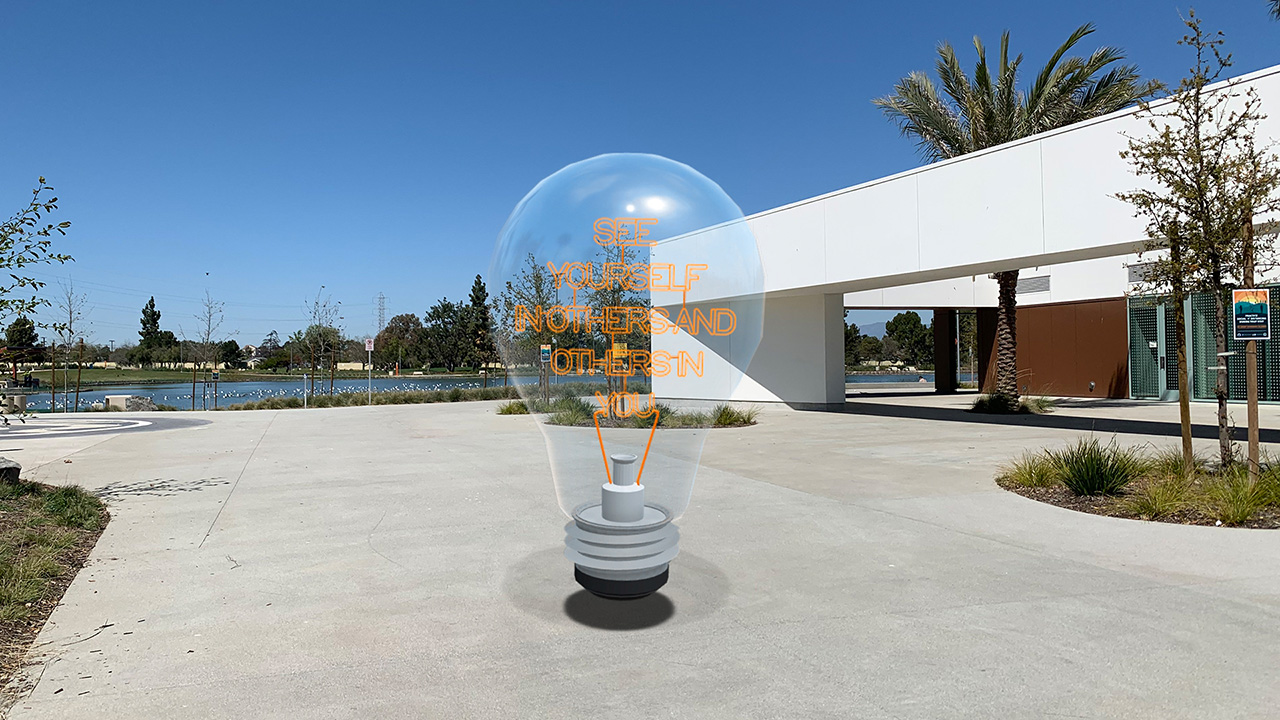Earlier this year, when the Los Angeles County Museum of Art (LACMA) announced its latest collaboration with Snap Inc., the company behind Snapchat, it promised to realize monuments to Los Angeles’ underrepresented histories and communities. But no bronze or stone sculptures, these commemorative markers would be wholly virtual. Augmented reality (AR) would be tapped, as Rita Gonzalez, Head of Contemporary Art at LACMA, told Jing Culture & Commerce, to address “this moment where we’re questioning the role of monuments in making history.”
And lo, the monuments have arrived. Last Tuesday, the first batch of LACMA x Snapchat: Monumental Perspectives projects was launched on the social media platform — and just in time for the International Day for Monuments and Sites. In collaboration with technologists from Snap’s Lens Creator community, artists I.R. Bach, Mercedes Dorame, Ruben Ochoa, Glenn Kaino, and Ada Pinkston have created virtual monuments boldly aimed at recontextualizing LA’s landscape. They can be accessed at specific locations across the city or anywhere users happen to be.
Ochoa’s homage to LA’s street vendors, “¡Vendedores, Presente!” is best experienced at MacArthur Park, while Kaino’s “No Finish Line,” which commemorates the generational narratives along the 1932 LA Olympic marathon route, unfolds at Christmas Tree Lane Park. Earvin “Magic” Johnson Park, meanwhile, plays host to Pinkston’s tribute to Biddy Johnson and Bach’s monument to self-reflection.
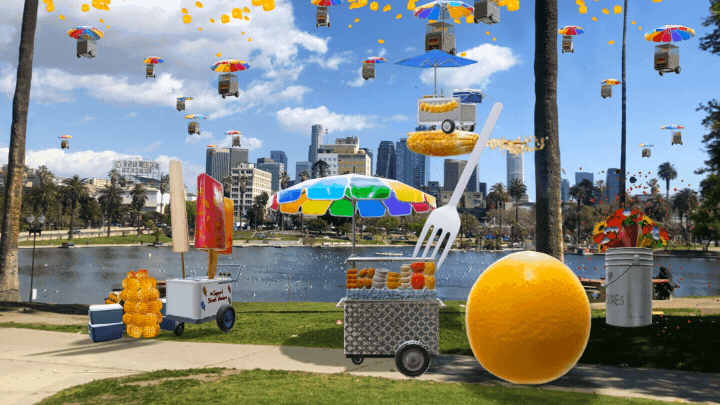
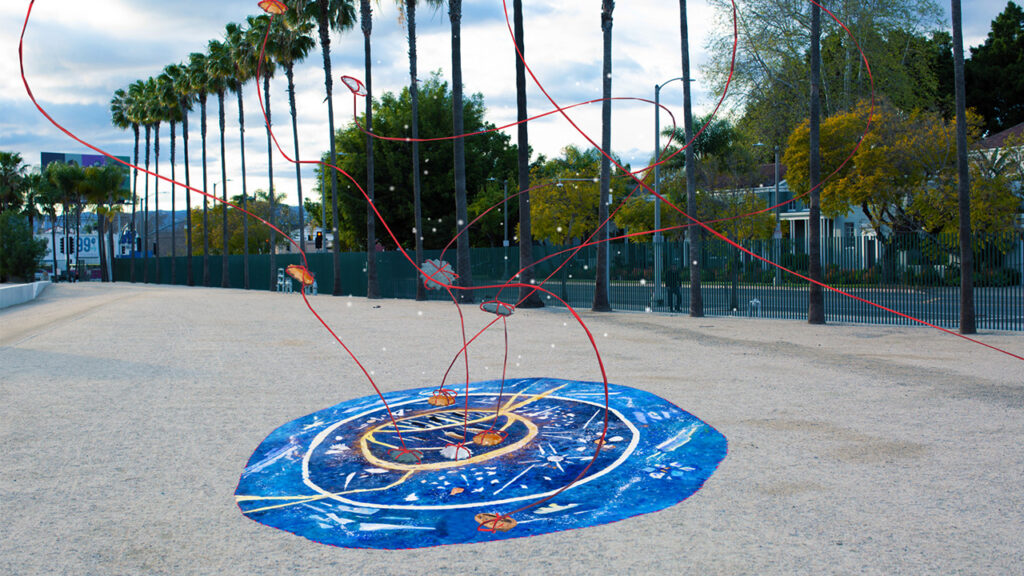
“¡Vendedores, Presente!” by Ruben Ochoa (above) and “Portal to Tovaangar” by Mercedes Dorame (below). Images: LACMA
At LACMA itself, Dorame’s “Portal to Tovaangar” presents a vibrant gateway — encircled with the artist’s signature star stones and red string — that connects the city’s Native history to its future. “I wanted to create a vision of the land or the city as having Tongva presence. I feel it’s so often relegated to a past tense,” she tells JCC. The work, she adds, functions as a “continuum of presence,” one that is “still accessible, living in people now and will continue to live.”
Here, AR doesn’t just offer new modes of engagement, but the opportunity to reimagine materiality and physical sites, while enriching yet-untold narratives. “Through this collaboration with LACMA, Snap Inc.’s augmented reality technology has become an immersive medium for advocacy and representation,” as Bobby Murphy, Snap’s co-founder and CTO, put it in a press statement. Dorame might just concur, as might Sutu, the interactive designer and Snap Lens Creator who brought her project to augmented reality. Below, the pair share more about their collaborative adventure into virtual storytelling.
What intrigued you about Monumental Perspectives?
Sutu: I was very excited that LACMA was taking the possibilities of augmented reality seriously. They could see the potential there. With COVID, institutions have had to be locked up, but this presented the opportunity to do an art walk outside, around LACMA. In discovering how incredible AR can be, they’ve really come onboard with the project and the concept.
Dorame: I first was interested because of the reference to monuments as I’ve been thinking a lot about what it means to have a monument. But then with AR, there was also something about the way that you can kind of get inside the piece. I wanted my piece to be something you could walk over, maneuver, be inside of, and look up at. It’s not something you look at from outside; I want people to be completely immersed. It was a really different relationship than what I get when I’m making installations in physical spaces.
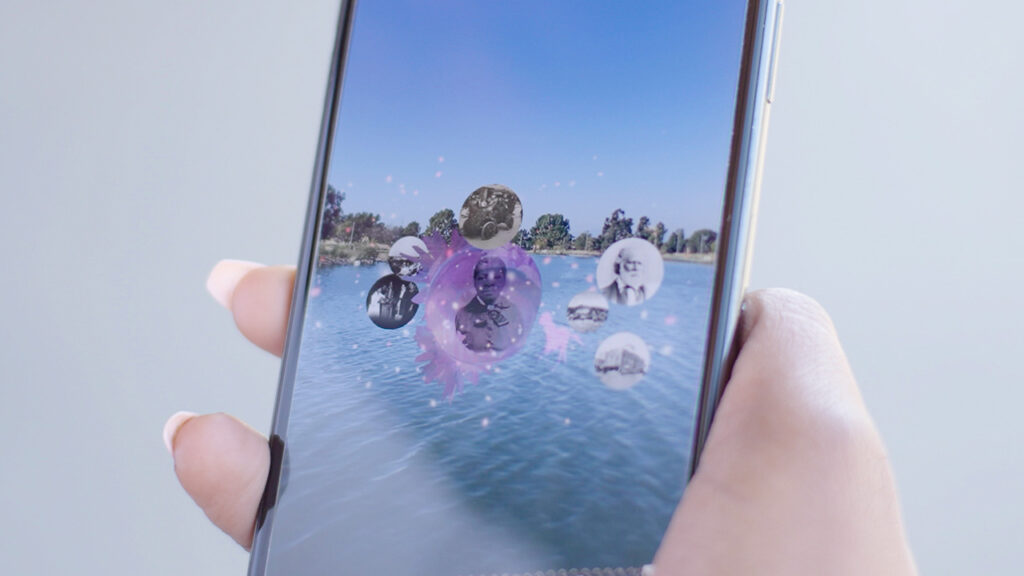
“The Open Hand is Blessed” by Ada Pinkston on the Snapchat platform. Image: LACMA
What went into your collaboration?
Sutu: We had a lot of phone calls and Zoom chats discussing the concept and sending files back and forth; it was just wonderful. I’m Australian, she’s Native American, and I enjoyed how we approached similar topics. In Native American culture, there’s that connection to country and their lands, and there’s a thread of that going through Mercedes work. This is where AR really excels because it’s all about the art connecting to the physical place.
Dorame: Because I wasn’t familiar with the medium, what was really beautiful about our conversations was getting to understand what the possibilities are. If it had just been me being, “Here’s my vision and this is what I want to make,” I feel like I wouldn’t have gotten into some of these places where more was possible. Sutu helped me kind of see some of these possibilities. It wasn’t just a technical kind of relationship. He was interested in the ideas too, which made it really fun.
Sutu, what were some key considerations for you as you worked on translating Mercedes’ work into AR?
Sutu: Because she’s a very hands-on analog artist — she uses natural artifacts like star stones and red rope — my first thought was that I didn’t want to lose any of this. I wanted to find a way to bring this into the AR experience. So I got her to take some photos of the star stones; she actually went onsite and created a large painting and I got her to take detailed photos of it. I pulled those objects into the digital environment, but used the photos for the textures. We didn’t just want this to be just another Mercedes Dorame installation because we don’t have to respect the rules of nature. It can be anti-gravity: the ropes and rocks can be suspended in the air without being connected to anything, floating and animated.
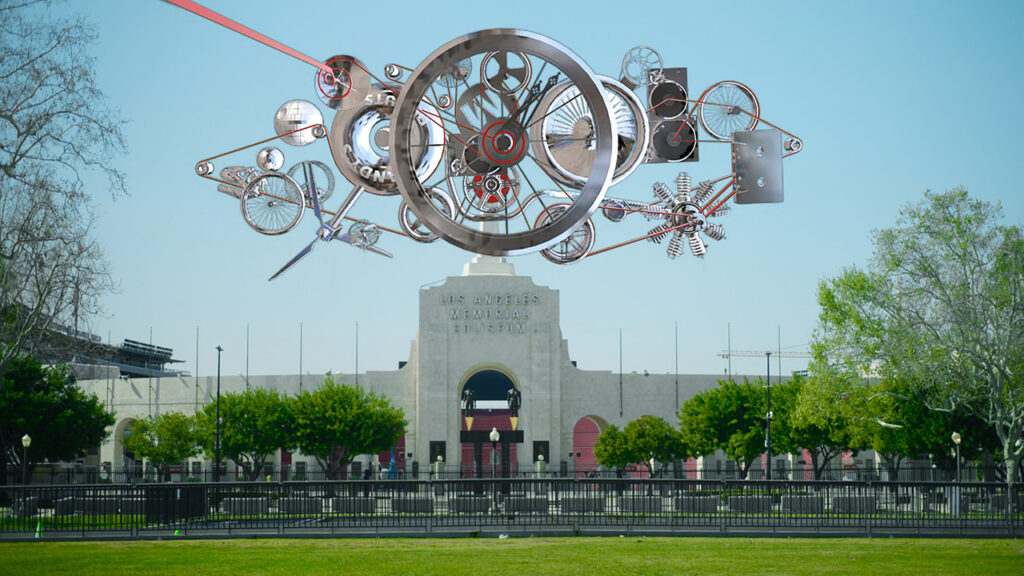
“No Finish Line” by Glenn Kaino. Image: LACMA
Mercedes, how did this project encourage you to think differently about your practice?
Dorame: I think so often you’re working in these constraints. Whether it’s the budget, or the space you’re given, or the height of the ceiling, you kind of have to fit within that parameter. And with this, there were really no parameters. It was really a challenge, but a good challenge to get outside of these parameters I’m used to working in.
How does audience engagement play into this piece?
Sutu: Because AR is a spatial artwork, it can really influence the way people move through a space. So with this work, I anticipated early on that young people especially will be climbing, crawling, and going over the ropes — and that’s where I think you’re gonna see the magic of this experience where they get really immersed in it. You get to discover the artwork from all these different angles and you make it your own little adventure doing that.
Dorame: People often don’t feel comfortable engaging with things, especially when you go into a museum and you’re not supposed to touch anything. There are exceptions to this rule, but it’s hard to get people to interact in art spaces. And so I think with AR and with people’s familiarity with the technology, there’s this willingness to engage and that’s really beautiful.
Mercedes, did this project change the way you view AR?
Dorame: I’m still kind of forming my ideas about this kind of engagement, but I think it did. What made that change for me is AR became a medium that can have a message and meaning. It’s not that AR isn’t also super fun. It can be engaging in a way that’s about pleasure, while also carrying this weight behind it and serving as a medium to tell a story.

